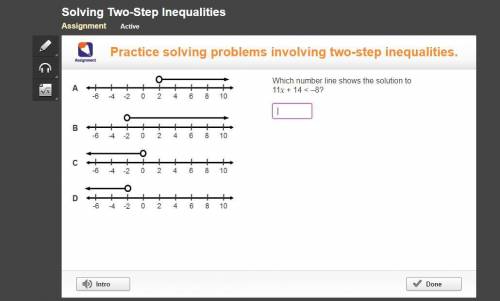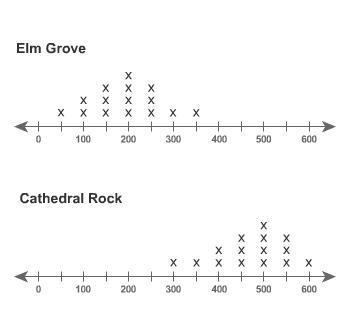Practice solving problems involving two-step inequalities.
4 number lines going from negative...

Mathematics, 24.04.2020 23:30 dntestkly7509
Practice solving problems involving two-step inequalities.
4 number lines going from negative 6 to positive 10. Graph A has an open circle at 2 with everything shaded to the right. Graph B has an open circle at negative 2 with everything shaded to the right. Graph C has an open circle at 0 with everything shaded to the left. Graph D has an open circle at negative 2 with everything shaded to the left.
Which number line shows the solution to
11x + 14 < –8?


Answers: 2


Other questions on the subject: Mathematics

Mathematics, 21.06.2019 18:30, amylumey2005
What can each term of the equation be multiplied by to eliminate the fractions before solving? x – + 2x = + x 2 6 10 12
Answers: 2

Mathematics, 21.06.2019 20:30, cld3331
Merrida uses a pattern in the multiplication table below to find ratios that are equivalent to 7: 9. if merrida multiplies the first term, 7, by a factor of 6, what should she do to find the other term for the equivalent ratio? multiply 9 by 1. multiply 9 by 6. multiply 9 by 7. multiply 9 by 9.
Answers: 1

Mathematics, 21.06.2019 20:40, afletcher2000
If the endpoints of the diameter of a circle are (8, 6) and (2,0), what is the standard form equation of the circle? a) (x + 5)2 + (y + 3)2 = 18 (x + 5)2 + (y + 3)2 = 3.72 (x - 5)2 + (y - 3)2 = 18 d) (x - 5)2 + (y - 3)2 = 32
Answers: 1
You know the right answer?
Questions in other subjects:


Social Studies, 27.05.2021 20:00


Chemistry, 27.05.2021 20:00

History, 27.05.2021 20:00


Biology, 27.05.2021 20:00

Spanish, 27.05.2021 20:00


English, 27.05.2021 20:00




